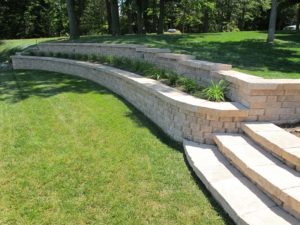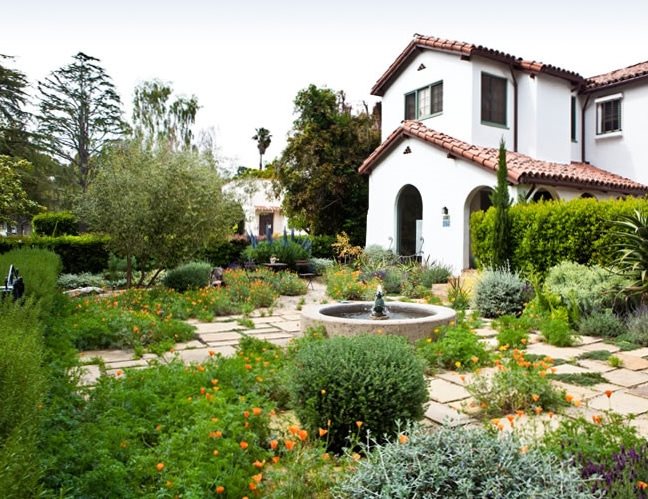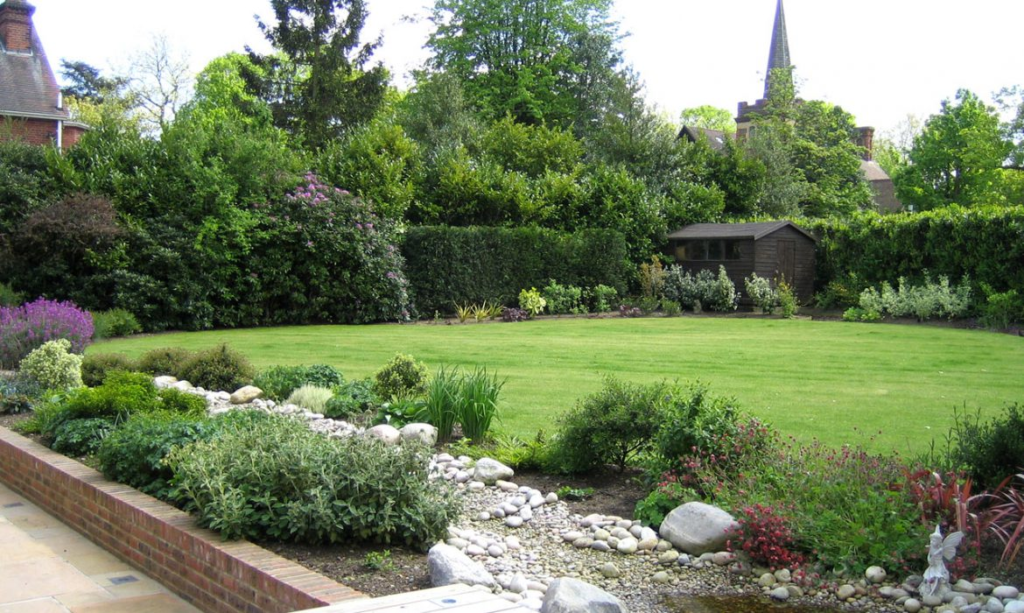Get This Report on Hilton Head Landscapes
Get This Report on Hilton Head Landscapes
Blog Article
The Only Guide to Hilton Head Landscapes
Table of ContentsAll About Hilton Head LandscapesThe Definitive Guide for Hilton Head LandscapesRumored Buzz on Hilton Head LandscapesThe Definitive Guide to Hilton Head LandscapesThe Definitive Guide to Hilton Head LandscapesExcitement About Hilton Head LandscapesThe Only Guide for Hilton Head LandscapesLittle Known Questions About Hilton Head Landscapes.
Kind compatibility is also a major element of unity in designone or two strikingly various kinds benefit comparison and emphasis, yet usually all various other forms ought to have some similarities for an unified look. Texture describes exactly how crude or great the surface of the plant or hardscape product really feels and/or looks.
Examples of plants with crude structure consist of philodendrons, agaves, bromeliads, hollies, hands, and hydrangeas. Hardscape with crude structure includes rough-cut stone, rough-finished block, and incomplete wood with knots and an increased grain. Matured or old building material that keeps a weather-beaten surface is frequently rugged in appearance. Qualities that produce fine structure include tiny vegetation; slim, strappy fallen leaves (grasses) or tall, thin stems; little, thick twigs and tiny branches; long stems (vines); and little, delicate blossoms.
What Does Hilton Head Landscapes Do?
Most plants are moderate texture, in that they can not be described as having either rugged or great appearance. Medium-textured plants act as a background to web link and link the crude- and fine-textured plants.

To make a room feel smaller sized, position the crude appearances along the outer border and the fine appearances closest to the visitor. The information of the rugged texture makes the plants show up closer and makes the space really feel smaller sized. The regarded texture of plants can also alter with the distance from the plant.
The Main Principles Of Hilton Head Landscapes
Strong shades boost the contrast and make the texture appear coarser, while muted colors can flatten structure. Hardscape with a crude texturesuch as really harsh rocks and strong, large timberstends to make all plant product appear a lot more moderate textured. Developers often develop a structure study (Figure 8) on paper to help decide the setup of plant products.
Color in plant material and hardscape adds interest and range to the landscape. Color is the most noticeable component in the landscape and is usually the emphasis of most property owners; nonetheless, it is additionally the most short-term aspect, usually lasting just a couple of weeks a year for private plants.
Top Guidelines Of Hilton Head Landscapes
An easy summary of the color wheel includes the 3 primary shades of red, blue, and yellow; the 3 second colors (a mix of two primaries) of environment-friendly, orange, and violet; and 6 tertiary shades (a mix of one adjacent main and secondary color), such as red-orange. Color theory explains the relationship of shades per other and how they must be used in a composition.

Analogous (sometimes called unified) color pattern are any three to five colors that are surrounding on the color wheel, such as red, red-orange, orange, yellow-orange, and yellow, or blue, blue-violet, and violet (bluffton landscaping). The colors relate to every various other because they generally include two main colors blended to form a secondary and two tertiary colors, which indicates they share usual residential properties
They have a tendency to have high comparison between them. One of the most typical sets are violet and yellow, red and green, and blue and orange. Complementary colors are typically located naturally in flowers; a typical pair is yellow and violet. Shade is located in the blossoms, foliage, bark, and fruit of plants.
What Does Hilton Head Landscapes Mean?
Green vegetation in all its different shades is the leading shade by quantity, however various other shades capture interest quicker due to the fact that of their high comparison to the color eco-friendly. Shade is likewise found in buildings, rocks, pavers, wood, and furnishings. Many shades in natural products, such as stone and wood, are usually soft and have a tendency to be variants of brownish, tan, and pale yellow.
Colors have residential or commercial properties that can affect feelings, spatial understanding, light high quality, equilibrium, and emphasis. Amazing colors often tend to be relaxing and need to be used in locations for relaxation and tranquility.
The Hilton Head Landscapes Statements
The "temperature" of colors can additionally influence the assumption of distance. Cool shades have a tendency to recede and are viewed as being further away, making a room feel larger. Cozy shades have a tendency to advance and are viewed as being closer, making a room really feel smaller sized. Shade can also be used to capture focus and direct sights.
For instance, intense yellow, which has the greatest strength, additionally has a high comparison with all various other shades (typically referred to as a "pop" of color) and ought to be utilized sparingly. A percentage of intense color has as much aesthetic weight as a big amount of a more controlled or weaker color.
Comparable (often called harmonious) color pattern are any three to 5 shades that are surrounding on the shade wheel, such as red, red-orange, orange, yellow-orange, and yellow, or blue, blue-violet, and violet. The shades relate to every various other due to the fact that they commonly consist of 2 key shades blended to create an additional and 2 tertiary shades, which suggests they share usual residential properties.
The Single Strategy To Use For Hilton Head Landscapes
They often tend to have high comparison between them. The most common collections are violet and yellow, red and eco-friendly, and blue and orange. Complementary shades are usually found naturally in blossoms; a typical pair is yellow and violet. Shade is found in the blossoms, vegetation, bark, and fruit of plants.
Environment-friendly vegetation in all its various shades is the leading color by amount, however other shades capture interest much more conveniently due to their high contrast to the shade green - landscapers hilton head island - https://telegra.ph/Transform-Your-Outdoors-with-Hilton-Head-Landscapers-07-03. Color is also located in buildings, rocks, pavers, timber, and furniture. The majority of colors in all-natural materials, such as rock and wood, are generally low-key and tend to be variants of brown, tan, and pale yellow
The Hilton Head Landscapes Diaries
Shades have properties that can impact emotions, spatial assumption, light quality, balance, and emphasis. Cool shades often tend to be soothing and must be utilized in areas for leisure and tranquility.
The "temperature level" of shades can also impact the assumption of distance. Cool shades often tend to content decline and are perceived as being further away, making a room really feel larger. Cozy shades often tend to advancement and are perceived as being closer, making a room feel smaller sized. Shade can also be utilized to catch interest and straight views.
As an example, intense yellow, which has the highest possible strength, additionally has a high contrast with all other colors (usually called a "pop" of color) and must be made use of sparingly. A little quantity of extreme shade has as much aesthetic weight as a huge quantity of an extra restrained or weaker shade.
Report this page